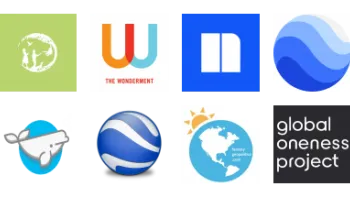Take a look inside 8 images
PenPal Schools
Pros: High-interest lessons that fuse subject skills with global connections. Supports peer feedback.
Cons: Little or no real-time correspondence. Could use more support for individual differentiation.
Bottom Line: This is a thoughtful, ready-to-go platform that facilitates authentic and safe cross-cultural collaboration.
Teachers looking to connect their students with others around the world, while building digital citizenship skills and content knowledge, should give PenPal Schools a serious look. Use these lessons/projects to get students communicating and collaborating with same-age students on universally relatable topics. Project topics can be entirely content-driven, such as "A World of Geometry" and "Multiplication and Division," or NGSS-focused, such as "Plants and Animals," "Robotics," and "Meteorology and Weather." There are also more provocative and timely topics, such as "Race in America," "Joining Forces for the Environment," "Immigration in the 21st Century," and "Facts, Opinions, and Fake News." For time-crunched teachers, the lessons, activities, and evaluation tools are ready to use, with no additional preparation required. Teachers can use PenPal projects to supplement units, to embed sociocultural and global citizenship skills, to present learners needing a change of pace with a challenge, or to plunge into deeper content or discussions. Whichever path teachers take, PenPal projects can always be modified within each classroom to meet the needs of teachers and learners; this includes the development of custom rubrics using PenPal Schools' built-in creation tool.
PenPal Schools is a free website that allows classrooms and students around the world to discuss and work together on collaborative, cross-curricular projects. The site boasts over 500,000 student connections made in 150 countries. Teachers can preview and assign projects from a large collection of options that span just about any school subject as well as important social and cultural discussions. There are filters for topic, age level, country, and more to narrow down projects. After assigning a project, students view videos, read background information (with three options for text complexity), post to discussions with other students, and create their own projects that demonstrate their understanding of a topic. While connecting students with peers outside of the classroom may challenge some teachers' comfort zones, a helpful dashboard offers visibility into all student work and communication, as well as customizable rubrics and written feedback. Many videos, helpful chat support, and teacher forums are available to help teachers successfully navigate the site.
One of the most memorable and powerful aspects of PenPal Schools is how it shows students their common experiences. Whether students are writing from Kuwait, Australia, the United States, or the United Arab Emirates, much of what they're witnessing is similar and relatable. This is matched with the valuable perspective students get on content and culture by relating to students with different experiences and backgrounds. In this way, PenPal Schools' global approach is admirable and arguably a remedy to some of the strife of a lot of online and offline interactions.
The project-based pen pal model supports students' writing skills while also building content knowledge and social and emotional learning skills. Plus, there's encouragement for students to create projects that are more interactive or personalized, such as Kahoots or YouTube videos. As with any lesson, teachers must review student work for task completion and quality, and with these projects, teachers must also monitor communications with pen pals. To help, there are customizable rubrics with skill-based criteria options and user-friendly feedback tools. However, there's always the possibility your students will be writing into the void, with little or no reciprocal interaction with others.
Teachers have the option to modify the class ability level to beginning, intermediate, or advanced, which helps in scaffolding or upping the rigor, but individualized differentiation rests solely on the teacher. And while the advanced ability level helps, the work wouldn't be considered very rigorous for most high schoolers. Nevertheless, the global citizenship skills that students emerge with are invaluable, and this is something that can benefit kids in any age group.


















